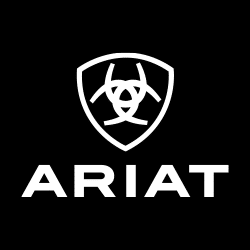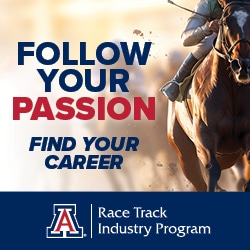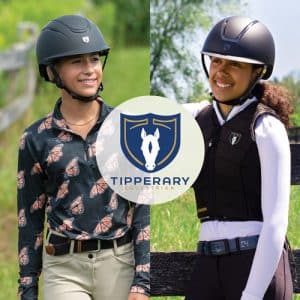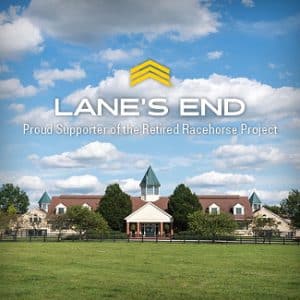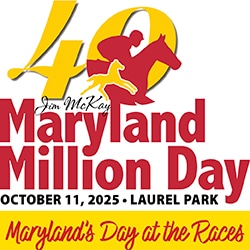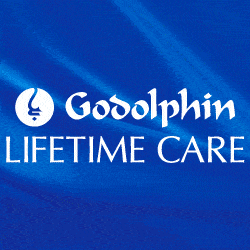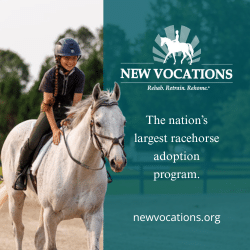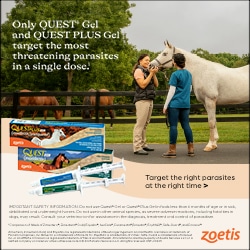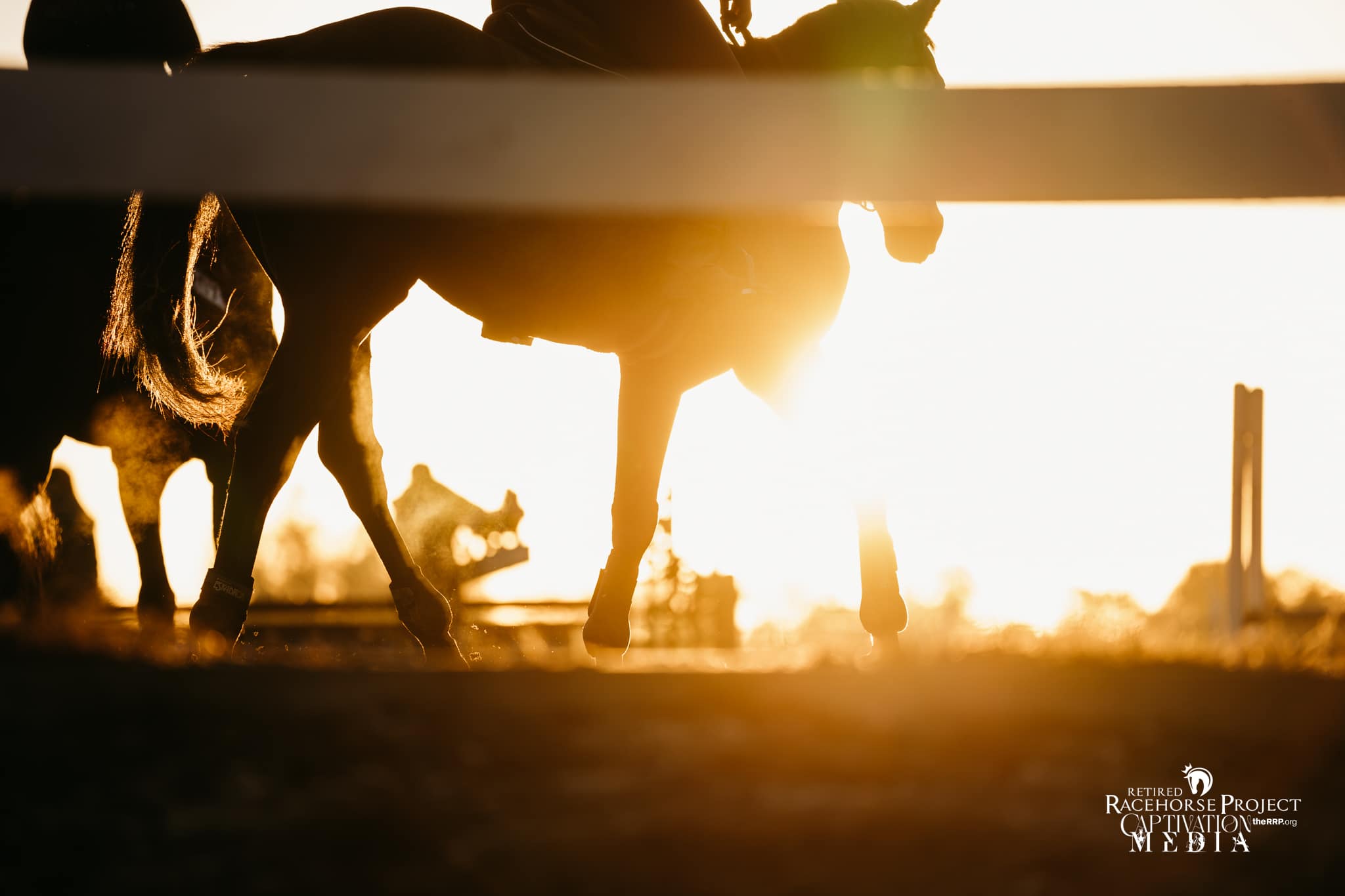
Photo by Captivation Media
If someone wants to buy a racehorse, they can put in a claim in a claiming race or bid at a public auction. Or they can do what many show horse and pleasure horse people do—contact someone with a horse they like and make them an offer.
Is it really that simple with a racehorse? Yes and no. Racehorses change hands privately all the time, just as they do on the show circuit. But with the plethora of information available, owners employ many different strategies to find the right horse at the right price.
Racehorse Trainers Utilize Connections for Private Sales
The easiest solution is to ask a trainer. If someone already races horses, they have a trainer. That person works at the racetrack every day and usually scouts prospects as part of his or her job. After all, the more horses trainers have in their barn, the more races they can win.
Lynn Ashby trains horses out of her Delaware base, as well as starts youngsters for others. Like most trainers, she frequently buys and sells horses privately. She also remains very active in aftercare and works hard to place horses in second careers after their racing days have ended.
“Sometimes it’s word of mouth,” Ashby says. “When people want to buy something, they go back and watch that horse’s races.”
Ashby says she recently sold an interest in a 2-year-old colt named Re Markably, who had raced six times with two wins, three seconds, and one third for earnings of more than $115,000. She was contacted by people on behalf of Gary Barber, a movie studio executive who owns racehorses all over the country.
Barber is a knowledgeable owner who enjoys studying races for likely horses to buy. He not only does some research himself but also works with agents and trainers who find good prospects for him.
“They have a great vet who comes out and vets them thoroughly,” Ashby says. “They make offers, and they are very nice to deal with.”
Owners and trainers operate via a partnership that works for them. Kosta Hronis and his family rely heavily on their trainer, Southern-California-based John Sadler, in buying horses. They have an incredibly successful system; for example, Sadler and his team found Full Serrano in Argentina, bought him privately, and moved him to Southern California, where he won the $1 million Big Ass Fans Breeders’ Cup Dirt Mile (Gr. 1) in November 2024.
After the race, when a reporter asked about the purchase, Hronis said, “I don’t really get to do the shopping. I just follow John around. I have the basket, and he puts the stuff in and I go to the register. That’s my involvement.”
Hronis was being somewhat facetious, but he says he respects Sadler’s expertise. He hired him to do a job that includes acquiring horses and lets him do it. The results have been phenomenal and include the brilliant Flightline, an undefeated superstar who cost $1 million at public auction. He went on to earn more than $4 million and is a popular breeding stallion.
Research on Potential Thoroughbred Racehorse Purchases
Many trainers and agents use published analyses of horses’ performances, which consider several variables, as tools. A popular one is called the Ragozin Sheets. The late Len Ragozin developed an algorithm to analyze each horse in a race for betting purposes. That evolved into today’s computerized system that bettors and buyers use.
In addition, owners and trainers might use clockers’ reports. Part of a horse’s training regimen consists of periodic workouts between days of galloping. Those workouts are officially timed at the racetrack and published as part of the horse’s record for bettors, usually in such publications as Daily Racing Form or on the Equibase website.
Private clockers go to the racetrack in the mornings to time horses, and some publish their own analyses of those workouts. People who believe a particular clocker has insightful information might buy those analyses in order to select horses for betting or for purchasing.
But data alone usually won’t persuade someone to buy a horse privately. A horse’s conformation and how he moves are as essential in a decision to buy a racehorse as they would be in buying a grand prix jumper.
This is why someone like Ashby can be crucial in these decisions.
“We’re there every day, and we see the horses,” Ashby says. “I always watch for 2-year-olds because you can see them when they’re peaking. I’m looking for their smoothness. I listen to how they’re breathing, how they gallop out (after the work).”
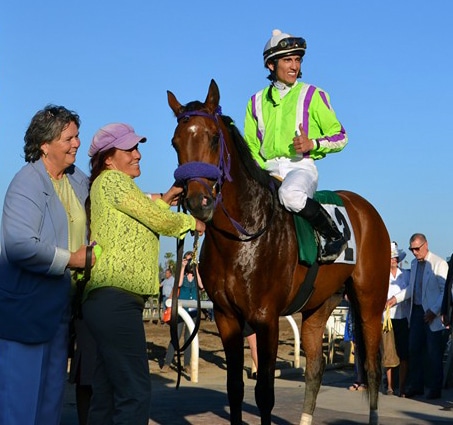
Lynn Ashby (left) has trained Thoroughbred and Arabian racehorses for more than 30 years. She frequently buys and sells horses privately and works to place horses in second careers after their racing days have ended.
Photo by Steve Heath
A Racehorse’s Best Chance for Success
Owners also pay close attention to where a horse might fit, whether at a particular racetrack or in a race class where he might succeed.
Racetracks have a hierarchy, just like show circuits. A horse that can win the Kentucky Derby can compete at the best racetracks for the most money. A lesser-quality horse might have no chance in the Kentucky Derby, but he could do very well at a smaller track.
Trainers often look for a horse that perhaps isn’t winning races at a major track, with the idea that they can purchase him and move him to a lesser track. On her circuit, for example, Ashby noted that people often buy horses running in Maryland and Delaware and take them to run at Colonial Downs, in Virginia, with success.
Geography can also play a role. Horses running in Europe often encounter soggy turf courses because of the amount of rain that falls in that part of the world. Owners and trainers have done well bringing European horses to places like California, which gets much less rain.
Trainer Phil D’Amato regularly works with agents in Europe to find horses that fit in California. He buys many Irish-breds and wins with them regularly in the U.S. One such horse, Gold Phoenix (IRE, Belardo [IRE] — Magnifica, by Mizzen Mast), started just once in his native Ireland. Through 2024, he has earned more than $1.7 million in the U.S. under D’Amato’s care.
Buying a Horse With Conditions
Gold Phoenix also illustrates the advantage an owner has when buying a horse “with conditions.” Races are categorized by type, with conditions written into them so that theoretically every horse in the race has an equal chance of winning.
Though the conditions can get complex, in basic terms horses begin by racing against others that have never won a race (maiden races). The next condition is a race open to horses that have never won two races, typically called “nonwinners of two.”
Gold Phoenix (IRE) won that first race in Ireland, so he was eligible for a nonwinners of two race when he first came to the U.S. He ended up running in three races for nonwinners of two because he finished second in the first two. By the time he won that third race in the U.S., he had earned a total of $69,000 running for that condition.
Owners might specifically look for a horse that has run well but hasn’t yet won a race, to buy him and then cash in when the horse wins at that level.
Thoroughbred Racing Partnerships
In more recent times partnerships have become very popular. People like Barber buy into horses such as Re Markably, but the original owners often retain partial interest. Four partners own Gold Phoenix (IRE), and the primary owner, Little Red Feather Racing, is itself a partnership of several people.
MyRacehorse has taken the partnership model of ownership to a new level. That organization offers what it calls microshares in a horse. If you invest in a MyRacehorse partnership, you could be one of thousands of owners, but it won’t cost you very much money.
My Racehorse started by purchasing horses privately. While it now primarily buys at public auctions, its private purchases led to a partnership in Authentic, winner of the 2020 Kentucky Derby. More recently, MyRacehorse owned 2024 Preakness winner Seize the Grey and 2024 Cygames Breeders’ Cup Sprint winner Straight No Chaser.
Michael Behrens, founder and CEO of MyRacehorse, put together a team of people who scout out horses to buy.
“We have three people who are always looking,” Behrens says. “They watch the visual, run all their assessments and find out where the horse came from.”
Sometimes the MyRacehorse team has previously seen the horse at a public auction. The agents keep notes on every sale they attend, including any veterinary exams they might have had conducted. If a horse looks promising as a private purchase later in his racing career, they can go back to those original notes.
“We may look to see ‘What did we miss?,’” Behrens says. “But then we use that information to figure out if we want to come in and pursue it.”
Take-Home Message
It boils down to the whole package. Someone looking to buy a racehorse privately assesses the horse’s conformation and way of going, his previous races, and the numbers those races generated, along with where he might fit both geographically and on which racing circuit. As with a show horse prospect, the presale veterinary exam plays a crucial role for potential buyers.
Then, if both parties can agree on a sale price, the deal is closed, and the horse has a new home. Owners who have done the proper due diligence improve their chances of their new horse taking them into the winner’s circle.

